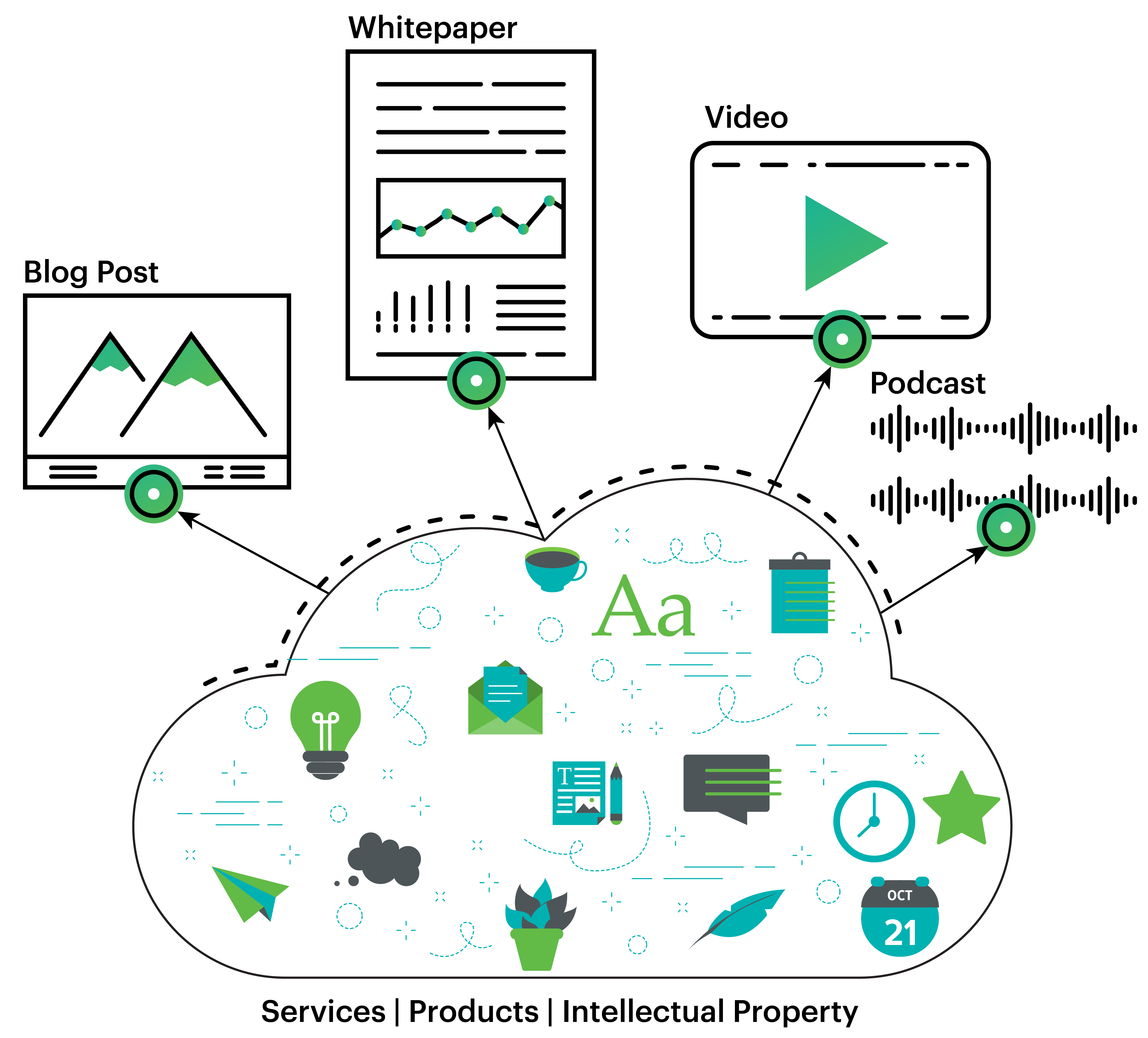At Flywheel, we help our clients with their digital marketing. We do this in many ways, including:
- Well-built Websites
- Sales & Marketing Automation (CRM)
- Custom Software / Integrations
- Analytics & Performance Measurement
- SEO & SEM
- Content Strategy / Content Campaigns
Through these efforts, we often discuss the importance of “thought leadership”. In this post, we want to add some context around what means and how you can employ thought leadership effectively.
Thought Leadership Defined
“Thought Leadership” is the practice of publishing content to show your expertise (or even familiarity) with a particular topic. Your subject matter authority over this content is strengthened by both the quality and quantity of this information.
Practicing thought leadership also signals to your audience that you have a lot more information and expertise to share (or sell). This strategy generates sales leads and fosters richer client conversations.
A Means to an End
On the surface, it may seem silly to give away your valuable knowledge for free. So, why publish any thought leadership at all? The reality is that a good thought leadership strategy has many benefits that will ultimately lead to growth. Some of the benefits
of thought leadership include:
- Proving you are knowledgeable about the services and products that you charge money for.
- Improving your appeal to existing and prospective clients (supporting your sales process).
- Amplifying your message and brand when your content gets shared on social media.
- Gaining insights through analytics to understand what information your audience finds valuable.
- Enabling more people to discover your website and business through keywords and topics they might use in a search.
- Collecting contact information when you ask for an email address in exchange for particularly valuable content.
The reality is that progressive and successful companies have come to value a well-implemented thought leadership strategy. If you are not giving away good content, your competitors certainly are (or they will be very soon). You need to stay ahead.
Thought Leadership in Practice

The core steps to a thought strategy are straight-forward:
- Figure out your point of view.
- Produce content (see below) that delivers value to your audience
- Publish it.
- Capture & analyze data.
- Repeat.
If appropriate, your content can suggest how your paid services or products provide even more help. But usually, this association is inferred.
You may want to experiment with different content types (or several) to see what works best for you:
- Blog Posts are often shorter, more casual, and easier to share.
- Whitepapers are typically more robust and often provide more value.
- Video can help engage and excite your audience.
- Podcasts are very popular for reaching an audience on the go.
- Webinars allow you to react in the moment and get into discussions.
You may also want to “gate” some of your content. Webinar registration or whitepaper download requests are good examples of a gate. In these cases, your visitors will need to provide an email address in exchange for access to your content.
This information can be useful for generating sales leads. Of course, you do not want to create too much friction for your visitors – use a gate for your most valuable content and only when you have a plan to leverage that information.
Build Momentum
A key component to finding success with your thought leadership strategy is to maintain a cadence that works for you. If you can only manage to publish thought leadership a few times per year, that is better than nothing. Decide what kind of capacity you have and set a realistic schedule. Do not forget to make time to review analytics and understand the results of your efforts.
It may be inferred, but to be clear: Flywheel is ready to help you set up a thought leadership strategy and manage it effectively on an ongoing basis.